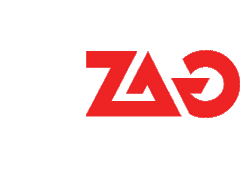Financial Systems Building Blocks
Financial Systems Building Blocks
Chart of Accounts Best Practices
Often the simplest and most basic things within an organization are overlooked. It is time to get back to basics. The most basic of outputs from an accounting department is the chart of accounts.
The chart of accounts enhances control, flexibility and reporting capacity when used effectively.
Unfortunately, many organizations become burdened with an overly detailed chart of accounts, resulting in the inability or delayed ability to perform a timely analysis of data. Or, organizations with multiple subsidiaries or locations utilize different ledger reporting structures, making it challenging to consolidate information for the parent company.
Problem 1: Overly Detailed or Unorganized Chart of Accounts
In an effort to add more detail to the ledger, many organizations become carried away with detailed inputs into their chart of accounts, while others don’t offer enough detail.
For example, one business may categorize all items, including printers and computers—when they are below their capital threshold—into their ‘office supply’ code, making it convoluted when reporting is run to decipher the differences between these higher priced items and low cost items such as replacement ink cartridges during reporting periods. This coding style is too narrowly focused. On the flip side, another organization will break down their ‘office supply’ category into the following: printers, computer monitors, laptops, desktops, ink cartridges and pens. This coding style creates a lengthy and convoluted chart of accounts.
Overly consolidated codes make it challenging for an organization to budget, monitor or make decisions regarding expenditures. Lengthy ledgers make it difficult to input numbers into the same accounts consistently, resulting in data overlaps and/or gaps. Lengthy ledgers are also expensive to audit annually, due to the extensive detail to reconcile.
Solution 1: Condense the Chart of Accounts
Simply put, condensing the chart of accounts codes can create more streamlined inputs, fewer annual audit costs and more useful reporting outputs. One common challenge companies face when executing this change is that multiple account users don’t adapt to the new codes; some utilizing only the new codes, while others are still inputting using the old system. To prevent expenses being coded improperly, block or retire old accounts within your ledger system. Inactive accounts should, to the extent your accounting system will permit, be hidden as well.
Another challenge is distorted historical data, causing difficulty when the need arises to compare current account balances to prior periods. This becomes particularly challenging when codes are changed intra year, as year-to-date reports become skewed. To minimize this challenge, convert your chart of accounts at the beginning of your reporting period.
Problem 2: Inconsistent Chart of Accounts across Subsidiaries
When organizations with multiple subsidiaries utilize different accounting ledgers, information may not align at the end of a financial reporting period. Inconsistency across subsidiaries becomes particularly challenging for the corporate accountant when business lines are within different industries, which can occur when an organization is acquired. The result: poor information translation, or the inability to translate information to the corporate parent.
Solution 2: Streamline the Chart of Accounts across Subsidiaries
The least daunting and disruptive solution to the organization is for each subsidiary to convert their ledgers at the reporting period end to the corporate chart of accounts. The corporate accountant will need to develop accounting code conversion keys for the use of each local accountant during data submission.
While this is less disruptive, it can result in excessive costs due to the added time required for conversion. While more disruptive and expensive, creating a standardized chart of accounts system across subsidiaries will provide for consistent translation across business units and more efficient staff usage over time.
The chart of accounts should remain consistent, consolidated and updated across users and subsidiaries.
Consolidating lengthy chart of accounts and streamlining ledger inputs when multiple subsidiaries exist will enable much needed reports to be generated more efficiently for the organization’s lead accountant and/or CFO.
Implementation of common accounts practices will streamline coding, data inputs and reporting capabilities for your organization. In summary:
- The chart of accounts should be streamlined and condensed, yet maintain the amount of detail needed for business analysis.
- At a minimum, maintenance should be completed on an annual basis, with the review including the consolidation and deactivation of accounts.
- The chart of accounts should remain organized and in financial statement order.
- Streamlining the chart of accounts across subsidiaries along with condensing your current reports will help you get back to the basics of doing business. In addition to initially streamlining, annual reviews of the accounts should be scheduled to maintain initial levels of efficiency.
